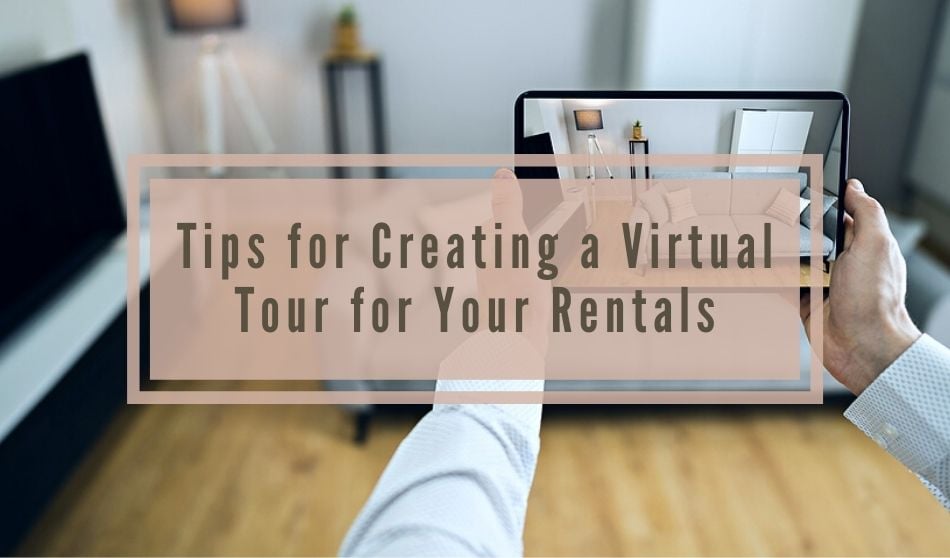The coronavirus pandemic has been a game-changer in the rental industry, and one important shift is the rising popularity of virtual rental tours. Because these tours are virtual, they are more accessible by potential tenants – even ones in different states. Across the United States, people are being encouraged to social distance, but tenants still need to find rental units to live in, and landlords have vacancies to fill.
What is a Virtual Tour?
While a virtual tour seems like it would be a straightforward term, there are two types of tours that it could mean. 3D tours or 3D walkthroughs allow potential tenants to digitally tour your unit without actually being on the premises. The software used for this type of tour makes it easy for potential renters to get a feel for the unit and gives them a more detailed view of their future home, one that they wouldn’t be able to get through photos alone. There are also often online training options or videos for first-time and less technical users.
The second type of virtual tour is where you are on a type of video call with potential tenants – something like Skype, Facetime, Facebook Live, or Youtube. This allows the tenants to ask you questions that they might not get the chance to ask you otherwise. You will also show more details than in a listing video, such as the pantry or the space under the sink. Because tenants can’t check things in a virtual tour as they would in person, they might ask you to turn on the shower to check the water pressure or show them the interior of the oven. This one is also generally easier to put together than a 3D tour.
A virtual tour where you directly interact with the tenants can be more beneficial for both parties. You can get a feeling for who your potential tenants are, and they can directly ask you questions about the unit. Here are some important tips that will make your virtual tour better for both you and the tenant.
2D Photos and Floorplans
Since your potential tenant isn’t with you in person to get a feel for the space, having the floorplan with measurements available in the original listing is especially helpful. And even if you offer a virtual tour, plan to send at least some follow-up photos after the tour. Since tenants normally take their own photos during the showings, it is a nice touch to be accommodating and to send them more detailed photos afterward.
360-Degree Listing Videos
Listing videos are a component that many potential tenants like being able to reference. However, tenants like an authentic view of their potential new home, and some listing videos can feel staged. 360-degree videos have been rising in popularity and can even be made just on your phone. They help to give potential tenants a full view of the unit, and it makes it feel more as if they are actually there.
Dedicated Scheduling Software
If you give tenants the option of a virtual showing, it can be difficult to keep track of all the different appointments, especially if you have multiple properties. Having software dedicated to scheduling and keeping track of these meetings is a way to lower your stress levels and keep everything organized.
Leave Time for Questions
Normally, in-person showings are when you and the tenants meet face-to-face. This is where you make a good impression on your tenants, get a feeling for who they are, and they get the chance to ask you any important questions that they might have. A virtual tour shouldn’t be any different. Even if you aren’t physically in the same room, maintain the conversation with your potential tenants and learn more about them.
The tenants may have questions about your pet policy, move-in details, additional rental fees, or any other number of things. Many of them might come with a list of questions that they want to be answered. Stay engaged with them, just like you would during an in-person showing. Make sure you allow enough time in the virtual tour for these questions to be asked, otherwise both you and the tenant may end up feeling rushed.
Be as Thorough as You Would In-Person
Even though it is a virtual tour, you should still clean and stage the unit like you would before an in-person tour. Every relevant part of the unit should also be shown, including common areas, elevators, and amenities. You should also showcase the smaller details of the unit as well, as the tenants aren’t able to look around themselves. This includes window views, fixtures, storage space, etc. All of the relevant paperwork should also be ready for you to electronically send to the potential tenant.






